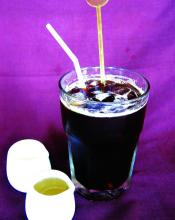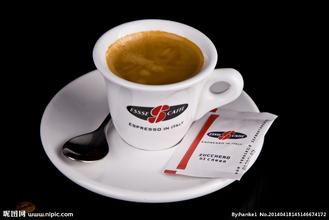Jamaican Coffee Manor introduces which brand of Atlanta Manor Coffee is good for Jamaican Coffee producing area
A closer look at the myth of Blue Mountain coffee is necessary because images of the past and reality of today are often at odds. In 1725, Sir Nicholas Lawes brought the first Blue Mountain coffee trees from Martinique to Jamaica and planted them in St Andrew's. Andrew's area. Today, the St Andrew region remains one of the top 3 producing regions for Blue Mountain coffee, the other two being the Portland region and St Thomas. Thomas) Place of origin. Within eight years, Jamaica exported more than 375 tons of pure coffee. Coffee production peaked in 1932, harvesting more than 15000 tons of coffee.
By 1948, however, coffee quality had deteriorated and Canadian buyers refused to renew contracts, so the Jamaica government set up the Coffee Industry Board to save the fate of premium coffee. By 1969, the situation had improved as Japanese loans improved production quality and thus guaranteed the market. Even in 1969, Japanese coffee drinkers were willing to pay insurance for the coffee. By now, the coffee has reached the point of being fanatically loved.
By 1981, about 1500 hectares of land in Jamaica had been cleared for coffee, followed by investment in another 6000 hectares. In fact, today's Blue Mountain region is a small area of only 6000 hectares, and it is impossible for all the coffee labeled "Blue Mountain" to be grown there. An additional 12000 hectares are devoted to growing two other types of coffee (non-Blue Mountain coffee): High Monuntain Supreme and Jamaica Prime Washed Jamaican.
Blue Mountain Coffee is one of the world's best grown coffees, and Jamaica's weather, geology and terrain combine to provide an ideal location. Ridges running through Jamaica extend to the east of the island, and the Blue Mountains rise to more than 2100 meters. The weather is cool, foggy and rainy frequently. Use this rich soil to harmonize with rainwater. Here, coffee trees are grown in a mixed cropping system, alongside banana and avocado trees on terraces.
Some small estates also grow Blue Mountain coffee, such as Wallenford Estates, Silver Hill Eatate, and Martinez. Martinez's Atlanta Estate, etc. Even the largest planters in the region are small-scale farmers by international standards, many of them smallholders whose families have worked the land for two centuries. Jamaica's coffee industry faces a number of problems, such as the impact of hurricanes, increased labour costs and difficulties in mechanising terraces. Many small estates and farms are difficult to rationalize

Important Notice :
前街咖啡 FrontStreet Coffee has moved to new addredd:
FrontStreet Coffee Address: 315,Donghua East Road,GuangZhou
Tel:020 38364473
- Prev

Introduction of Kopi Luwak Manor in Indonesia how many coffee farms and producing areas are there in Indonesia
In the early 1970s, Java cut down Arabica trees introduced by most Dutch and planted Robbosa beans instead. Since then, Java coffee has become greasy, plain and has a strong smell of wheat and tea. Among the few remaining Arabica estates, Djampit is the most famous. These beans are similar to other Indonesian beans, but with obvious sour taste and texture.
- Next

Unique taste of Puerto Rico Coffee Manor introduces San Pedro Manor
Puerto Rico's coffee beans are carefully planted, pure, aromatic and heavy, of which the best coffee is Yauco Selecto, which means Selecto. Yaocote Coffee is grown only on three farms in the southwest of the island, San Pedro, Caracolillo and La Juanita. It is a truly high-quality coffee with a strong flavor and a long aftertaste. Puerto Rico
Related
- Does Rose Summer choose Blue, Green or Red? Detailed explanation of Rose Summer Coffee plots and Classification in Panamanian Jade Manor
- What is the difference between the origin, producing area, processing plant, cooperative and manor of coffee beans?
- How fine does the espresso powder fit? how to grind the espresso?
- Sca coffee roasting degree color card coffee roasting degree 8 roasting color values what do you mean?
- The practice of lattes: how to make lattes at home
- Introduction to Indonesian Fine Coffee beans-- Java Coffee producing area of Indonesian Arabica Coffee
- How much will the flavor of light and medium roasted rose summer be expressed? What baking level is rose summer suitable for?
- Introduction to the characteristics of washing, sun-drying or wet-planing coffee commonly used in Mantenin, Indonesia
- Price characteristics of Arabica Coffee Bean Starbucks introduction to Manning Coffee Bean Taste producing area Variety Manor
- What is the authentic Yega flavor? What are the flavor characteristics of the really excellent Yejasuffi coffee beans?

